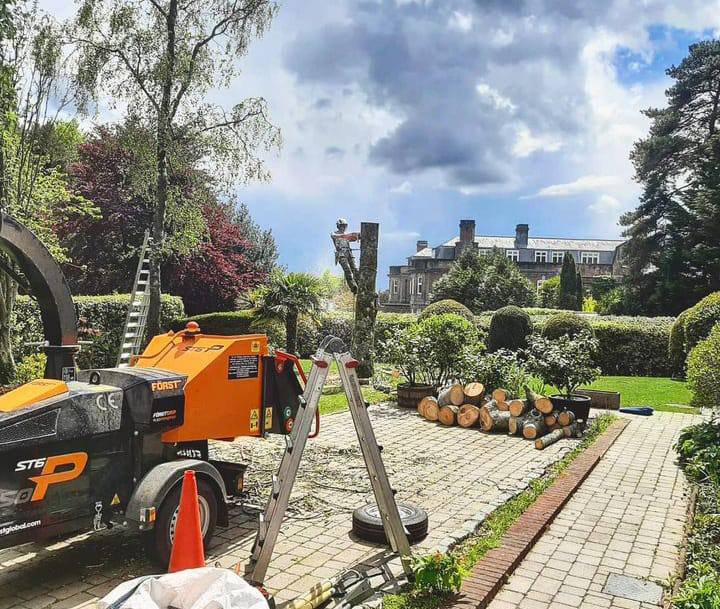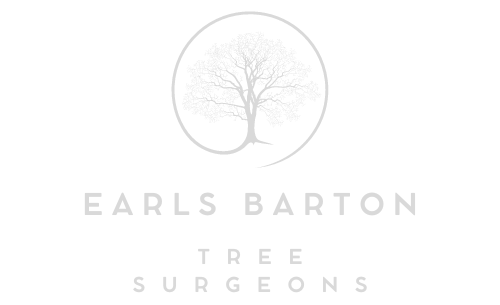Pruning Trees for Structure, Not Just Style
Introduction
When people think of tree pruning, they often picture tidy shapes and neat outlines. While aesthetics are certainly a part of the process, structural pruning is about much more than appearances. Done correctly, it strengthens a tree’s framework, improves its resilience, and helps it grow in a healthy and safe manner for years to come.
At Earls Barton Tree Surgeons, we’re committed to keeping trees across Earls Barton and wider Northamptonshire strong, safe, and long-living. This article will walk you through the importance of pruning for structure, not just style, and how this technique can prevent future problems while enhancing natural form.
Why Structural Pruning Matters
Every tree develops a branching structure over time. If left unmanaged, this structure can become unbalanced, weak, or vulnerable to weather damage and disease. Structural pruning involves guiding the tree’s growth to encourage strong, well-spaced limbs and a central leader (the main upward-growing trunk).
Key benefits of structural pruning:
- Reduces the risk of branch failure
- Encourages strong limb attachments
- Promotes even weight distribution
- Prevents overcrowded or competing branches
- Enhances long-term tree health and stability
It’s a proactive approach that sets trees up for strength and balance—far more than just shaping for looks.
Early Intervention Is Best
The most effective time to start structural pruning is during a tree’s formative years, when its branches are still flexible and growth habits haven’t become entrenched. That doesn’t mean mature trees can’t benefit too—but early intervention delivers the most impact with the least stress.
When to consider structural pruning:
- Within the first 5–10 years of a tree’s life
- After planting, once the tree is established
- If weak forks or multiple leaders are forming
- To remove crossing, inward-growing, or low branches
Young tree pruning is an investment—helping reduce the need for major corrective work later in life.
Common Structural Issues to Watch For
Understanding what to prune begins with recognising weak or undesirable branch formations. These flaws may not be immediately visible to the untrained eye but can pose serious problems down the line.
Common problems include:
- Co-dominant stems – two leaders growing from one point, prone to splitting
- Included bark – bark trapped between branches, leading to poor attachment
- Crossing branches – rub together and create wounds
- Overly upright limbs – tend to be weak and grow too close to the trunk
- Low-hanging branches – may obstruct paths or structures in future
Each of these issues can be addressed with careful, selective cuts aimed at improving spacing and orientation.
How Structural Pruning Supports Safety
Strong structure means a safer tree. Weak limbs or poorly attached branches are far more likely to fail during high winds, snow, or storms—especially in mature trees where the weight is considerable.
Structural pruning improves safety by:
- Reducing the chance of large branch drop
- Preventing wind sail effects from dense crowns
- Limiting branch interference with buildings or power lines
- Keeping branches away from walkways, driveways, or roofs
At Earls Barton Tree Surgeons, we often perform structural pruning as part of regular maintenance to reduce long-term risk, especially in public areas and residential gardens.
Enhancing Natural Beauty Without Over-Pruning
Pruning for structure doesn’t mean sacrificing a tree’s natural form. In fact, it does the opposite—by encouraging growth that reflects the species’ shape, without congested or awkward branching.
A balanced structure often means:
- A clear central leader
- Well-spaced lateral branches
- A proportionate crown
- Light and airflow throughout the canopy
Over-pruning, or ‘topping,’ damages this structure and can lead to stress, decay, and unsightly regrowth. A professional approach focuses on minimal cuts with maximum effect.
Timing and Techniques
The best time for structural pruning varies by species, age, and condition, but generally speaking, late winter or early spring is ideal. During this dormant period, trees are less stressed by pruning and more responsive when growth resumes.
Key pruning practices:
- Use clean, sharp tools to avoid rough cuts
- Remove only small amounts—no more than 25% of the canopy at once
- Cut at the branch collar to allow proper healing
- Prioritise removal of dead, diseased, or structurally unsound limbs
Professional arborists like those at Earls Barton Tree Surgeons ensure these techniques are applied correctly for each tree’s specific needs.
Conclusion
Tree pruning is far more than just shaping a canopy—it’s about supporting a tree’s long-term health, safety, and structural soundness. By focusing on proper structure rather than quick cosmetic fixes, you give your trees the best chance to grow strong, live long, and stay safe.
At Earls Barton Tree Surgeons, we specialise in structural pruning that’s tailored to the individual tree and its environment. Whether you’ve got a young sapling that needs guidance or a mature tree with structural concerns, our expert team is ready to help. Give your trees the care they deserve—and enjoy a garden that thrives safely and naturally.
Call us on: 01604 279 697
Click here to find out more about Earls Barton Tree Surgeons
Click here to complete our contact form and see how we can help with your tree needs.

